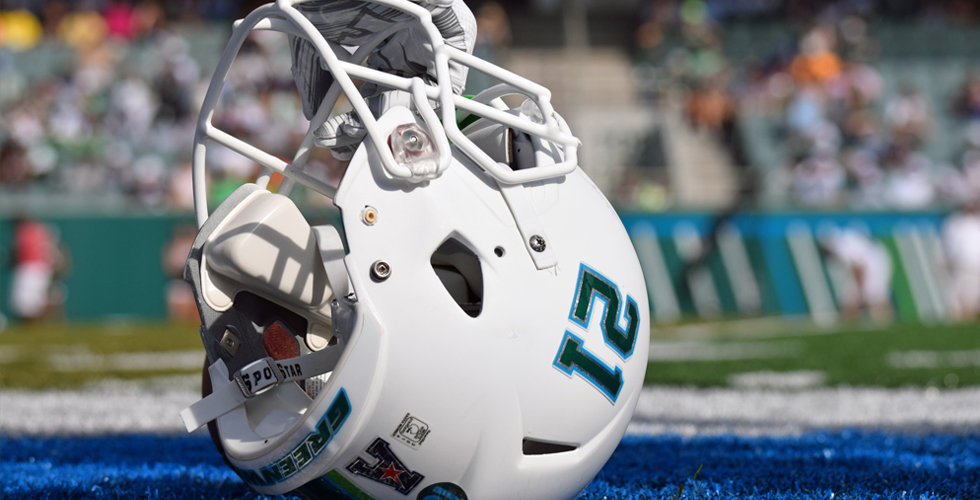Fantasy Football Strategy, Draft Advice and Tips

(Inside Science) -- The National Football League's regular season starts on Thursday, Sept. 10, but fantasy football season is already in full swing for many armchair quarterbacks.
Fantasy football offers fans the chance to make the personnel decisions for their own football team. As fans compare players and develop strategies, it might surprise them to learn that academics are studying the same issues, revealing insights about the game on the field and even aspects of everyday life.
The object of fantasy football is simple: compete against other fans to accumulate the highest total of what are called fantasy points, which are awarded based on the performance of real players in real games. Rosters usually include quarterbacks, running backs, wide receivers, tight ends, kickers and the defensive unit from one NFL team. Fantasy leagues pair off their teams into matchups each week, and each team's combined results (yards gained, touchdowns scored, among other statistics) earns points. The highest point total wins.
The most common way to assemble a roster is via a draft of available athletes. There are typically around 10 teams in a league, taking turns making pressure-packed choices for multiple rounds, hoping that the best players somehow evade selection by rival teams to remain available.
Jeffrey Ohlmann, a management scientist at the University of Iowa in Iowa City, usually investigates fleet management or truck routing, but he has also researched optimal sports drafting strategies. His primary insight has been developing a method for teams to make difficult decisions during drafts.
Deciding which position of need to fill first can be difficult. Beginning with the number of fantasy points each player is expected to accumulate makes sense. Considering the difference between the players that can be claimed now and with later selections is too. If the difference between a quarterback available now and one who would be available in the next round is 10 points, and the difference between the running backs is 20 points, then the team will score more points overall by selecting a running back now and waiting to select a quarterback. Expanding this concept to the entire draft allows a fan to design the best possible strategy for each pick.
Many fantasy experts will say that teams must draft running backs with their first two picks, while others will say that if a quarterback like Tom Brady or Peyton Manning is available, grab him and worry about the rest of your team later. Make sure to be flexible, though. "Don't go into your draft with a fixed plan, because this strategy is sure to be destroyed the first time your competitor selects the player you covet," said Ohlmann.
But before drafting, fans need to learn about the available players. Becoming familiar with last year's top performers is typically insufficient for making reliable predictions about this year's statistics. A player's statistics depend heavily on issues beyond the player's ability, said Joel Sokol, a professor of Industrial and Systems Engineering at the Georgia Institute of Technology in Atlanta. Not only can injuries reduce a player's time on the field, but a multitude of factors, from the score of the game to an opposing team's strengths, can influence his production.
Sokol studies complicated phenomena like protein structure modeling, warehousing, and manufacturing, in addition to issues in sports. His experience has helped him develop a wide range of insights to suggest ways to build a better fantasy football team.
Touchdowns are extremely valuable in fantasy football, but predicting how many a player will score frustrates even the most experienced fans.
"For the majority of running backs, yards gained last year are a better predictor of future touchdowns scored than touchdowns scored last year," said Sokol. He also suggested that drafting consistent, reliable performers early on in the draft will pay off combined with choosing riskier players later on in the draft.
However, it is important to draft at least a few players who have the potential to become fantasy studs.
"Fantasy footballers that are consistently competitive year-after-year typically combine players who are consistent with players who are 'high risk, high reward,'" said Ohlmann.
Sokol also advocated diving into the deep pool of statistics available on the Internet to reveal some very useful information. If a quarterback consistently misses open receivers (people keep lists of this stuff), his ineptitude may be shrouding a wide receiver's talent. This might be a reason to rank Minnesota's receivers a bit higher this year now that Brett Favre has joined the team.
Sokol expected that the truly dedicated may be able to go even further, to analyze stats based on situations and formations -- knowing more about a coach's tendencies can help predict how players will be used.
Sometimes the best predictions fail to play out on the field. The emergence of a new star can blindside even the best fantasy football players. "I liken picking fantasy players to stock-picking. It's an imperfect science," said Ohlmann.
Yahoo! offers one of the more popular places to play fantasy football online here.

